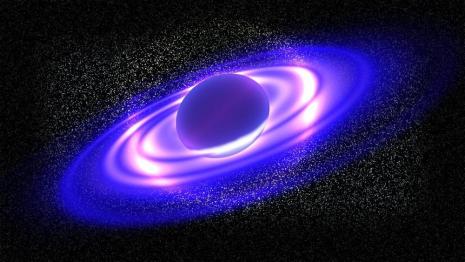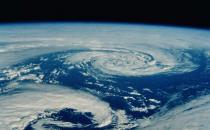
Expansion of the Universe - Year 10 CLE

This online resource looks at cosmology.
The resource is a Connected Learning Experience (CLE) to help teachers teach the concepts concerned with the Big Bang theory to Year 10 students.
Description:
In this investigation, Edwin Hubble’s observations will be examined as evidence for the Big Bang theory. In 1929, Hubble discovered that the light from distant galaxies was red shifted and that the further a galaxy is from Earth, the faster it is moving away. This was evidence for the expansion of the universe following the Big Bang.
Learning intentions
Students will be able to:
- explain that red shift applies to objects that are moving away from the Earth
- identify that the amount of red shift relates to the speed of recession
- analyse the validity of claims made in secondary sources
- make accurate measurements
- construct appropriate representations that allow them to interpret and analyse the data
- identify patterns and relationships in data
The SVG-based diagram that this link takes you to is best viewed with a browser other than Internet Explorer.
Australian Curriculum v9 Codes: AC9S10U03 (Year 10)
Additional Information
The Connect Learning Experience Resource
A Connected Learning Experience (CLE) is a resource package designed to support the use of inquiry investigations in the classroom.
A CLE may not encompass all the concepts and skills addressed in the specific content descriptions outlined by the Australian Curriculum: Science for that Year level. The Learning Intentions clearly define the aims and objectives of the CLE.
Year 10 Achievement Standard
This lesson sequence provides opportunities to gather information about students’ achievement of specific components in the standards (which are bolded in the statements below).
By the end of Year 10, students analyse how the periodic table organises elements and use it to make predictions about the properties of elements. They explain how chemical reactions are used to produce particular products and how different factors influence the rate of reactions. They explain the concept of energy conservation and represent energy transfer and transformation within systems. They apply relationships between force, mass and acceleration to predict changes in the motion of objects. Students describe and analyse interactions and cycles within and between Earth’s spheres. They evaluate the evidence for scientific theories that explain the origin of the universe and the diversity of life on Earth. They explain the processes that underpin heredity and evolution. Students analyse how the models and theories they use have developed over time and discuss the factors that prompted their review.
Students develop questions and hypotheses and independently design and improve appropriate methods of investigation, including field work and laboratory experimentation. They explain how they have considered reliability, safety, fairness and ethical actions in their methods and identify where digital technologies can be used to enhance the quality of data. When analysing data, selecting evidence and developing and justifying conclusions, they identify alternative explanations for findings and explain any sources of uncertainty. Students evaluate the validity and reliability of claims made in secondary sources with reference to currently held scientific views, the quality of the methodology and the evidence cited. They construct evidence-based arguments and select appropriate representations and text types to communicate science ideas for specific purposes.
- Year 10 > Science Inquiry Skills > Communicating > Communicate scientific ideas and information for a particular purpose,... > ACSIS208
- Year 10 > Science Inquiry Skills > Evaluating > Critically analyse the validity of information in primary and secondary sources... > ACSIS206
- Year 10 > Science Inquiry Skills > Processing and analysing data and information > Analyse patterns and trends in data, including describing relationships between... > ACSIS203
- Year 10 > Science Inquiry Skills > Processing and analysing data and information > Use knowledge of scientific concepts to draw conclusions that are consistent... > ACSIS204
- Year 10 > Science Understanding > Earth and Space Sciences > The universe contains features including galaxies, stars and solar systems and... > ACSSU188
- Year 10 > Science as a Human Endeavour > Use and influence of science > People use scientific knowledge to evaluate whether they accept claims,... > ACSHE194


